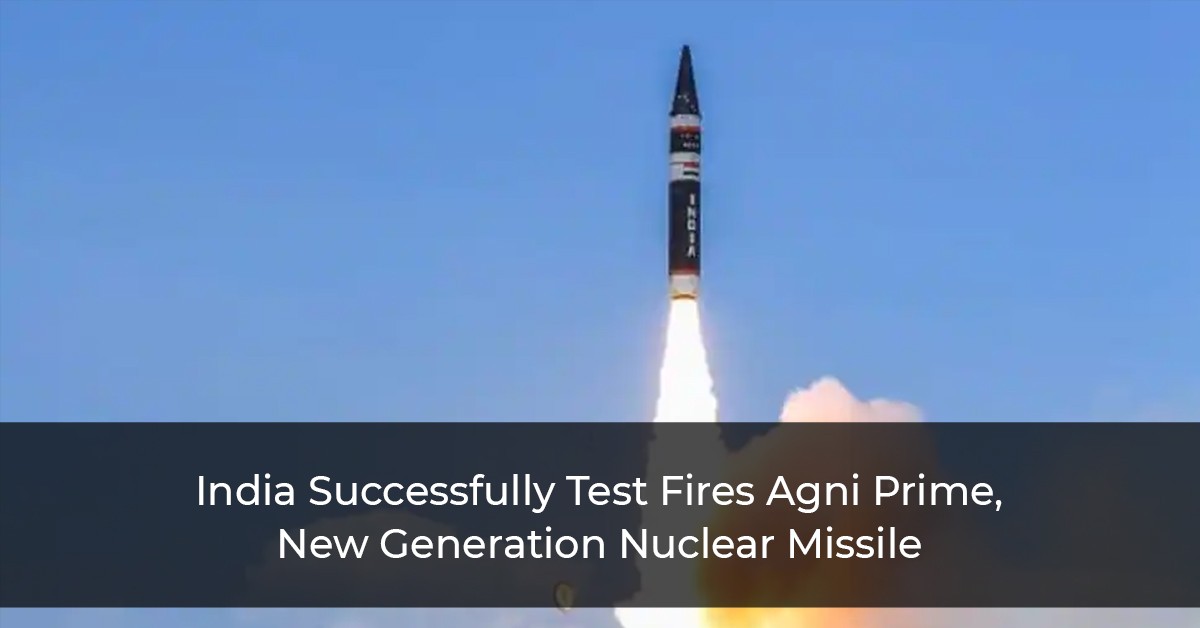Highlights:
- DRDO successfully flight-tested the new generation nuclear-capable ballistic missile Agni P off the coast of Balasore in Odisha.
- The Agni P missile is a next-generation improved version of the Agni missile series.
- The Agni Prime is a canisterized missile with a 1,000-2,000 km range.
India successfully tested the Agni Prime ballistic missile, a more advanced version of the Agni series of missiles, off the coast of Odisha on Monday morning.
The successful test, began at 10.55 a.m., was a “textbook launch,” according to a statement from the Defence Research and Development Organisation (DRDO). It took place on Dr. APJ Abdul Kalam Island, roughly 150 kilometres east of Bhubaneswar, at a testing facility.
According to the DRDO statement, “The missile was tracked and monitored by various telemetry and radar stations positioned along the eastern coast. It followed a textbook path, accomplishing all mission goals with pinpoint precision.”
The Agni Prime missile, according to sources, is a next-generation nuclear-capable weapon made completely of composite materials. They described it as a canisterized missile with a range of 1,000-2,000 kilometres.
DRDO successfully flight tests New Generation Agni P Ballistic Missile https://t.co/vEPsqyfUpG pic.twitter.com/XoYPGiwEpR
— DRDO (@DRDO_India) June 28, 2021
The Defence Research and Development Organisation (DRDO) successfully test fired an extended range version of the indigenously developed ‘Pinaka’ rocket from the Integrated Test Range in Chandipur, Odisha, two days ago.
A Multi-Barrel Rocket Launcher (MBRL) fired a total of 25 ‘advanced pinaka’ rockets in fast succession at targets at varying ranges.
An official told the news agency PTI, all mission objectives were met, and the expanded range version could kill targets up to 45 kilometres away.
In March, the DRDO successfully test-fired a missile with an innovative propulsion system developed by the ITR in Chandipur, based on solid fuel ducted ramjet (SFDR) technology.
All subsystems performed as planned, according to the DRDO, and SFDR technology will be a huge help in creating long-range air-to-air missiles.


